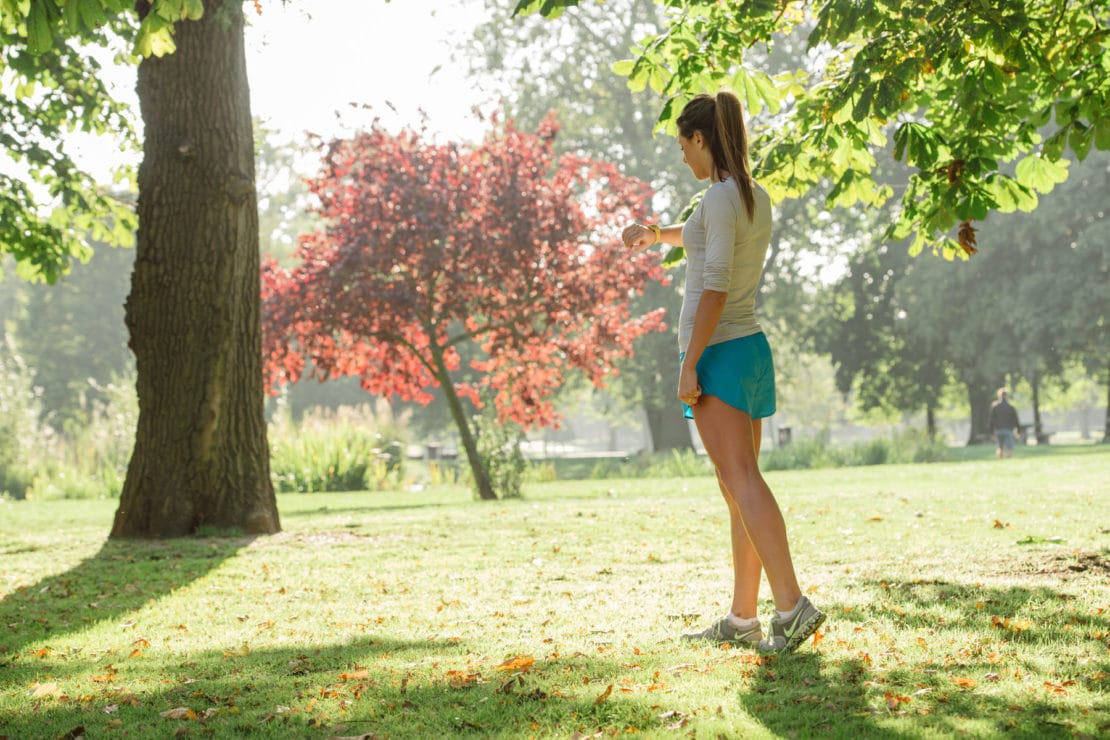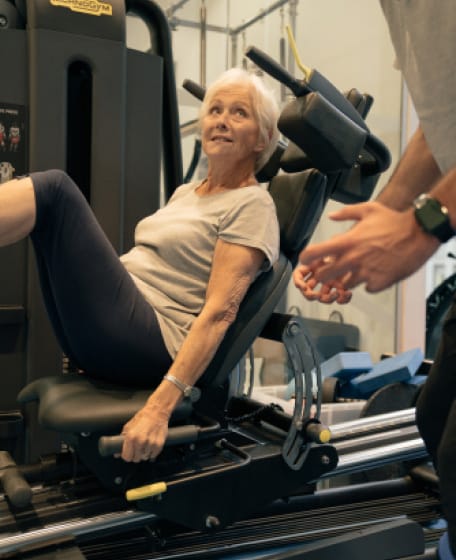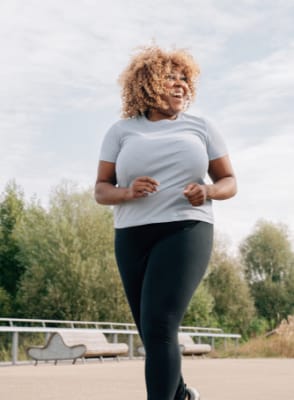How to Stay Active Safely During a Heatwave

Andy Page
Clinic Manager & Strength and Conditioning Coach
- 26 June, 2024
- Exercise
- 5 min read
How to Stay Active Safely During a Heatwave

With warmer weather just around the corner, the number of runners, cyclists, and outdoor enthusiasts hitting the pavement and on nature trails.
Team sports, in particular, have surged in popularity, reaching their highest levels in six years. However, as temperatures soar, it’s essential to prioritise safety and make necessary adjustments to your everyday routine. Our top tips will help you stay safe during a heatwave, enable you to maintain your activities and remain hydrated and refreshed throughout the summer months.
Should you exercise during a heatwave?
The optimal temperature for exercise typically ranges between 20-22°C.
Exercising in hot weather, however, puts additional stress on your cardiovascular system. When temperatures exceed 33°C, the risks of fatigue and dehydration significantly increase. However, this doesn’t mean that you should stop running in the heat altogether.
“Accept that running in the heat will be more challenging and adjust your expectations accordingly,” explains Pure Sports Medicine Clinic Manager Andy Page. “Slow down your pace, listen to your body, and focus on the benefits of heat training, such as improved cardiovascular fitness and endurance. Visualisation techniques and positive self-talk can also help you stay mentally strong and focused.”
Bodily responses to exercising in the heat
Here’s a closer look at how your body responds to heat during exercise.
Rising core body temperature
When temperatures exceed 30°C, your body works harder to deliver oxygen to your effected muscles. Your systolic and arterial pressure also increases to help your muscles contract, using 20% of the energy for movement and converting the remaining 80% to heat. However, if your body can’t release this extra heat, your overall temperature will rise, raising the risk of heat exhaustion or heat stroke. After your workout, gradually slow down your activity but keep moving for 10 minutes to cool down and recover properly while keeping hydration levels up.
Rapid heart rate
For every degree your body temperature rises, your heart will pump an extra 10 beats per minute. Your maximum heart rate largely depends on your age and overall fitness level, but some common examples include:
- Walking heart rate: 90 – 153 beats per minute (BPM).
- Target heart rate: based on age, calculated to be between 50-85% of your maximum heart rate, which is 220 minus your age.
- Resting heart rate: this should fall between 60-100 beats per minute (BPM).
For those looking to train for a marathon or reach certain milestones, finding your optimal heart rate zones via lactate threshold testing can be highly beneficial and will enable you to maximise your potential. Tools such as a fitness tracker or chest-band device can also provide additional insights that can help you tailor your routine and help you meet your goals.
Cooling down
When you exercise in the heat, your body produces sweat to regulate your temperature. Factors such as temperature, humidity, exercise duration, intensity and your overall fitness level will also impact how much you sweat. If you are fit and healthy, you may even produce more sweat as your body generates additional heat. As sweat evaporates, you release this excess heat and cool down.
“A lukewarm shower can help cool your core temperature without the shock that could potentially stop your body from cooling effectively. Additionally, focus on gentle stretching, adequate sleep, and proper nutrition to aid in recovery,” comments Andy.
Be aware of health risks
Exercising in hot weather can undoubtedly tough, so it will be important to be aware of common health risks. Alongside dehydration, serious health concerns include heat cramps, heat exhaustion and heat stroke:
- Heat cramps: these can occur after a high intensity workout, which can cause in cramps and spasms in the legs.
- Heat exhaustion: your body struggles to cool down, leading to symptoms such as fever, muscle cramps, feeling faint, excessive sweating, headache, dizziness, and nausea.
- Heat stroke: this is the most serious form of heat illnesses and can be characterised by a change in mental state, a body temperature above 40 degrees, and symptoms that include fatigue and confusion. Heatstroke can be fatal and may require hospital treatment, with recovery spanning up to 48 hours.
Staying informed about these risks and taking precautions can help you enjoy your summer workouts safely.
Remain hydrated
If you’re not sweating much while exercising in the heat, it might be a sign of dehydration. Adults should aim to drink about 2-2.5 litres of fluid daily, but during a heatwave, this should increase to roughly three litres or more for men, and slightly less than three litres for women.
To keep on track, a hydration plan should be factored into your workout routine. This should include isotonic drinks to replace lost minerals, nutrients, and essential electrolytes to aid in rehydration and enhance athletic performance. They drinks will also help you to exercise safely, and for longer periods.
“Overhydrating with water alone can lead to dilution of electrolytes in your blood and hyponatremia (low sodium levels). To hydrate properly, drink steadily throughout the day and balance your water intake with electrolytes by incorporating sports drinks or electrolyte supplements into your hydration plan,” Andy adds.
“An isotonic drink typically contains 4-8g of carbohydrates and electrolytes such as sodium, magnesium, and potassium,” explains Pure Sports Medicine Nutritionist, Clem Cleave. “During high-intensity workouts, some athletes may prefer a hypotonic drink, which has less sugar (less than 4g of carbohydrates per 100ml) and is easier on the stomach. Energy drinks are also considered hypertonic because they have a high carbohydrate content (more than 8g/100ml). Although they may help with the recovery phase, they are not ideal for rehydration as they lack sufficient salt.”
“Increase your carbohydrate intake before and after long runs to fuel your body and aid recovery. However, avoid heavy consumption of carbohydrate gels and protein bars during runs, as stomach discomfort is more common in the heat,” notes Andy.
Dress for the weather
It’s always best to exercise when it’s cooler, either early in the morning or in the evening as the sun goes down to avoid the peak temperatures and make your workout more enjoyable. Choose clothes that are stretchy and breathable to keep you feeling good during your workout, and ultimately, help you to meet your goals.
However, if you decide to work out in the peak heat, moisture-wicking garments are a great choice, as wick the sweat away from your body and keep you cool as you exercise. Refrain from Lycra and compression garments as they will impair cooling. Additionally, cooling vests and ice packs can also provide additional support in helping to regulate your body temperature.
Wear suncream
When exercising in the heat, consider investing in a quality pair of sunglasses, a breathable hat, and a good sunscreen to protect yourself from harmful UV rays. Your sunscreen should be a minimum of SPF 30 and should be reapplied every two hours (or after a heavy workout session). Alternatively, why not change your scenery and adapt your workout to include shaded areas, such as wooded trails or parks that provide sufficient cover to reduce the risk of overheating. Staying safe in the heat is all about making smart choices and listening to your body.
Try something different
With the right preparation, gear, nutrition, and mindset, you can enjoy the longer days and improve your performance when exercising in the summer heat.
Alternatively, embracing indoor activities like strength training and Pilates can offer a refreshing change, ensuring that you stay cool in the heat, reap the benefits of a varied workout and will keep your workouts interesting.
Whether you choose to embrace the outdoor heat or opt for the comfort of indoor exercises, maintaining an adaptable and well-rounded fitness routine will ensure you remain active and motivated all summer long.

Advice
Over the last 20+ years our experts have helped more than 100,000 patients, but we don’t stop there. We also like to share our knowledge and insight to help people lead healthier lives, and here you will find our extensive library of advice on a variety of topics to help you do the same.
OUR ADVICE HUBS See all Advice Hubs

